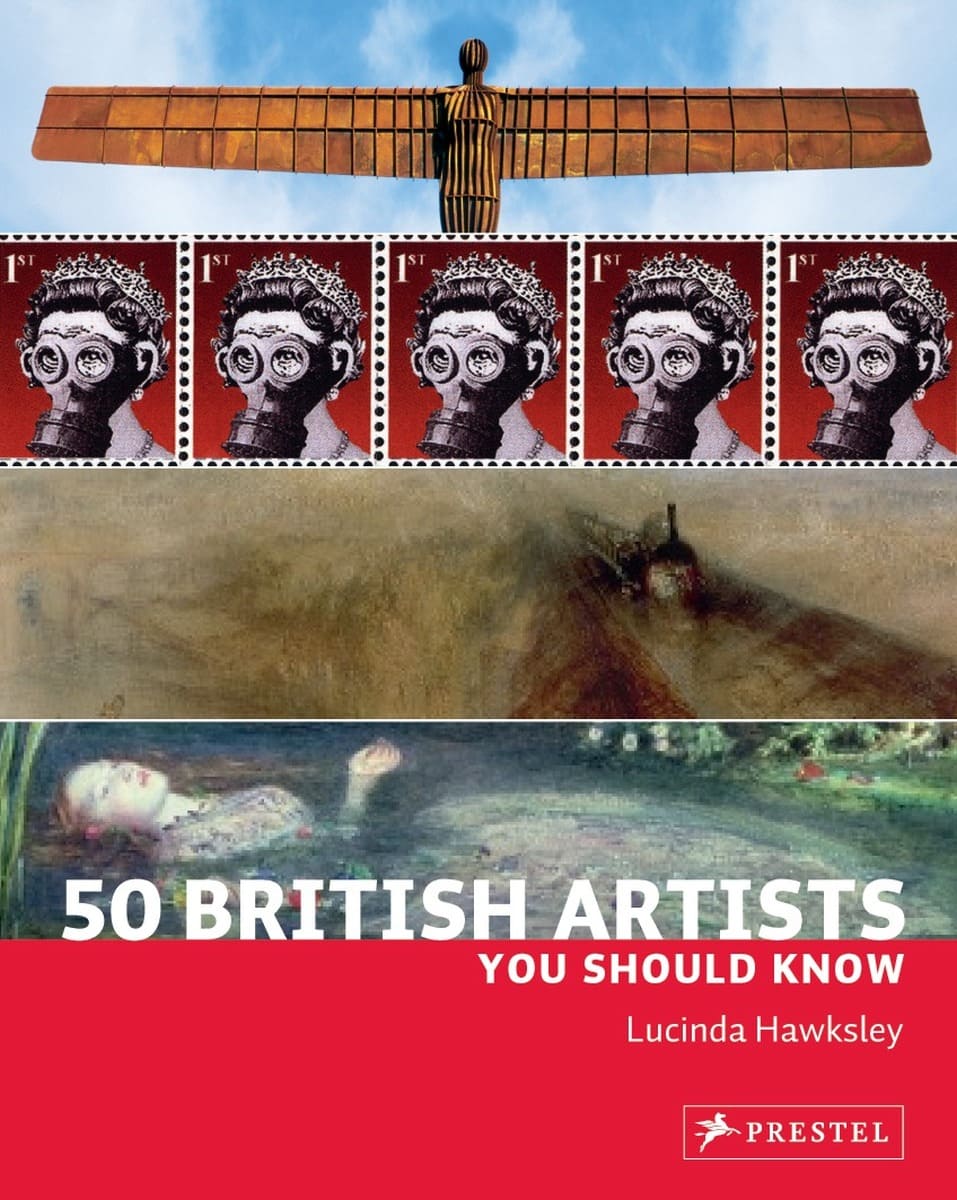The world of British art is so rich, that choosing just 50 of them, was an unenviable task. The artists who made it onto the publisher’s final list are not only masters in their field, but they are all ground-breaking, fascinating figures whose lives and work have changed the course of art history. Each artist in this book is also representative of many other superb artists with whom they have worked, either alongside or in competition against.
The landscape of the British Isles reflects the British peoples’ artistic nature: white horses and fertile giants carved into chalky hills, Celtic crosses, the magnificence of stone and wood circles, such as those at Stonehenge and Avebury, the skilled artists and craftsmen who created towers, castles and baronial homes all reflect the generations of artists and artisans who have made this collection of islands their home. Yet despite this long tradition of artistry, for many centuries British fine art was an amalgamation of influences from elsewhere in Europe.
During the first Elizabethan age, however, British artists suddenly began to come into their own and a new and exciting age of British painting was born. Finally, with the founding of the Royal Academy under King George III, Britain had an artistic academy to rival those of Paris, Antwerp and Rome. In the 20th and 21st centuries, the British art scene has flourished and developed in more exciting ways than could possibly have been envisaged when Joshua Reynolds proudly accepted the role of First President of the Royal Academy in 1768.
The diversity of the British landscape has proved as equally inspirational as the British people themselves. While J.M.W.Turner was recreating the seascapes that surrounded the British Isles, his rival John Constable was idealising the rural Suffolk of his childhood. As Britain grew more industrialised and greater numbers of people moved to urban areas, artists including L.S.Lowry, Walter Sickert and Charles Rennie Mackintosh turned city streets and buildings into works of art.
Rebellion has long been a part of the British psyche, with each generation discovering a reason to break away from the art that went before. The Romantics felt the need to break away from the Classicists, the Pre-Raphaelites rebelled against the Royal Academy, the Bloomsbury Group firmly shut out the Victorian period of their childhoods and Francis Bacon and Gilbert & George rebelled against Britain’s archaic homosexuality laws. By the late 20th century, it was becoming increasingly difficult to find a new and unique reason for artistic rebellion, but the Young British Artists (YBAs) purported to create an entirely new style of art for a new millennium and Banksy chose to rebel against using anything as conventional as a canvas and oils.
The fifty artists you will encounter in this book encapsulate the diversity, beauty, joy and wit of British life, culture, people and landscapes. For a small collection of islands, Britain has played an astonishingly large role in the history of the world and 50 British Artists You Should Know reflects that story. The artists chosen to illustrate these pages will take you on a journey from the time when England, Wales, Ireland and Scotland were separate kingdoms, through the age of unification, into the age of the vast world-encompassing British Empire and into a modern world, in which all four countries are exploring their own unique identities once again. With every generation, a new style of British art will continue to evolve and British art world will continue to be peopled by activists, visionaries and rebels.
